Best Old House Neighborhoods 2010: the Midwest
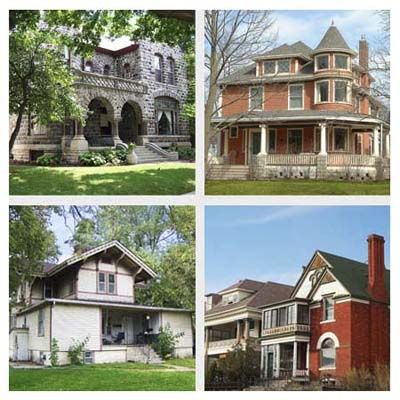
For our third annual Best Places to Buy an Old House contest, what we looked for was simple: oft-overlooked neighborhoods populated by people who share an appreciation of finely crafted homes that have plenty of past and lots of future. And what we found—with the aid of our friends at PreservationDirectory.com, who helped us contact thousands of neighborhood groups, real estate agents, residents, and preservationists for nominations—was mighty impressive.
From Michigan to Minnesota, here are our picks for the best spots for old house lovers in the middle of the country.
North Mayfair, Chicago, Illinois
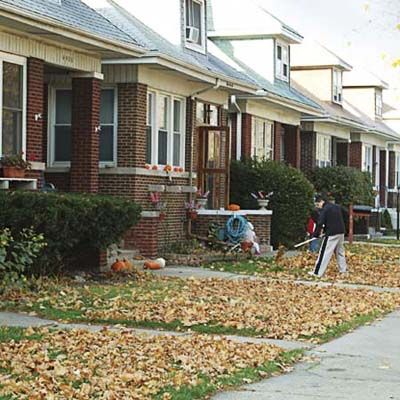
The Neighborhood
Like Polish sausage and deep-dish pizza, the Craftsman bungalow is both ubiquitous and beloved in Chicago. And one of the few places you can still score one for a reasonable price is North Mayfair. Here you’ll find block after uniform block of sturdy, tree-shaded brick bungalows occupied by an affable mix of old-timers, many of German and Swedish descent, and new residents. But what we like is the neighborhood’s stubborn determination to maintain its historic character through the North Mayfair Improvement Association, founded in 1929. The group just succeeded in its effort to get part of the neighborhood listed in the National Register of Historic Places and is adamant about keeping out-of-scale building developments at bay.
The Houses
Brick bungalows with Craftsman-style built-ins and stained glass.
Why Buy Now?
Property-tax freezes are available for those looking to restore older homes. Prices are (temporarily) down. Though rare, we found a fixer-upper bungalow for $218,000.
Among the best for: City Life, Cottages and Bungalows, Families, First-Time Buyers, Fixer-Uppers, Midwest
West Central Neighborhood, Fort Wayne, Indiana
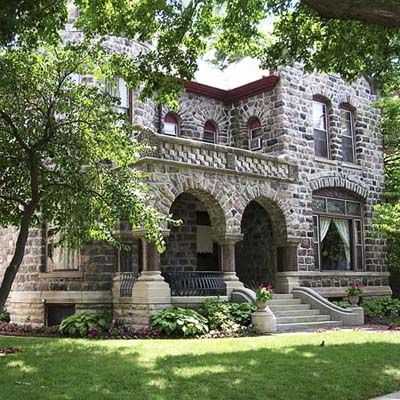
Whether it was the owner of an electric plant, a hardware wholesaler, or the proprietor of a railroad-car works, most of Fort Wayne’s early businessmen called West Central home. From 1830 to the 1950s, they built grand houses in myriad styles, from Federal to Prairie, along the neighborhood’s brick-paved streets. While the area fell into decline in the 1960s and ’70s, its easy walking distance to a re-energized downtown Fort Wayne is attracting a new generation of residents. The majority of the statelier homes have been restored, but there are plenty of fixer-uppers still available—mostly sturdy little factory workers’ cottages packed with as many details and fine craftsmanship as their larger neighbors.
The Houses
Here you’ll find best-of-the-best examples of brick Federals, sprawling Prairies, ample American Foursquares, and Greek Revival cottages, as well as breathtaking examples of Richardsonian Romanesque houses designed by the Indiana-based architectural firm Wing and Mahurin. Homes range from a very affordable $50,000 to about $250,000.
Why Buy Now?
The tough-as-nails neighborhood association is vigilant about maintaining West Central’s beauty, garnering it a place on the National Register. The association also sponsors an annual home-and-garden tour that attracts thousands. Expansive parks and newly designated bike lanes are getting residents here on a health kick. And downtown Fort Wayne—home to a new minor-league baseball stadium and the beloved Mad Anthony Brewing Company—is just steps away.
Among the best for: Bargains, Cottages and Bungalows, Fixer-Uppers, Gardening, Midwest, Victorians, Walkability
The Longfellow Neighborhood, Iowa City, Iowa
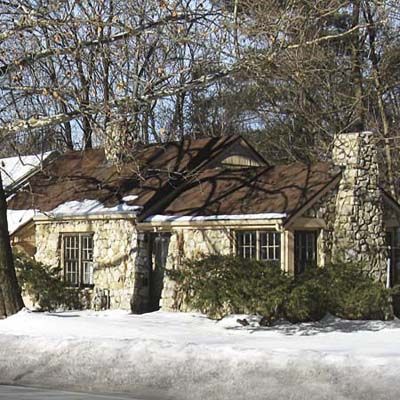
Twenty years ago, many of the houses in the neighborhood were rundown and on the brink of being converted into apartments. But with designation of the last of its three sections as a local and national historic district in 2002, the community solidified its passion for preservation and began rebuilding, renovating, and repairing anew. Today, its collection of about 900 unique homes near the University of Iowa attracts families and professionals alike. The house prices are reasonable, the schools superb, and the emphasis on local art and culture refreshing. Recently, residents started a massive public art project, putting up sculptures and historical markers throughout the neighborhood.
The Houses
From Queen Annes to Craftsman bungalows, the houses span a century of building and start in the mid-$100,000s. But the neighborhood’s real gems are its smattering of tiny stone-clad, thatched-roof cottages along the east side of Ralston Creek, known for their use of salvaged material and built by local architect Howard Moffitt from 1920 to 1940.
Why Buy Now?
If the charming homes and friendly folks aren’t enough to draw you to Longfellow, there are always the state tax credits (from funds allocated by the Iowa State Legislature) on historically appropriate exterior, interior, and site renovations.
Among the best for: Bargains, City Life, College Towns, Cottages and Bungalows, Families, Midwest
Historic Midtown, Wichita, Kansas
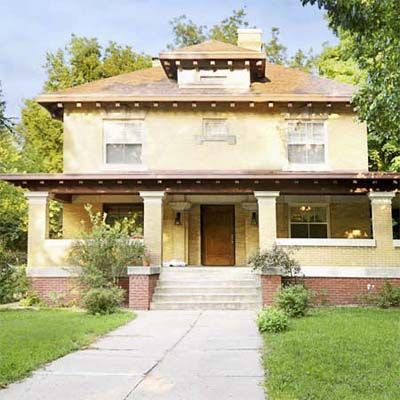
A diverse mix of college professors, young professionals, and longtime locals populate the beautiful homes sitting on spacious lots in Historic Midtown, Wichita, Kansas. The neighborhood borders the Arkansas River and downtown Wichita, with the arts district, new 15,000-seat arena, and the historic NoMar International Theater—an old vaudeville house undergoing rehabilitation—all just a short walk away. Those looking for good eats to top off a night of entertainment will enjoy the almost completed 21st Street International Market, an open-space destination for ethnic cuisine and products.
The Houses
There are plenty of bargain homes here, from fixer-upper Craftsman bungalows to Folk Victorians that need just a little bit of TLC. Midtown tends to be a little less pricey than nearby Riverside or College Hill, with homes ranging from $50,000 to $200,000.
Why Buy Now?
As a neighborhood, Historic Midtown has struck the perfect balance between honoring the past and looking to the future. The prices are right, the people exceptionally friendly, and with Wichita State nearby, there’s always something to see or do.
Among the best for: Bargains, Gardening, History Happened Here, Fixer-Uppers, Retirees, Small Town, South
The Villages, Detroit, Michigan
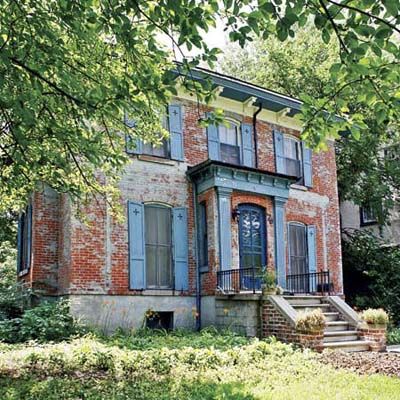
Yeah, times are tough in Detroit. Still, we can’t overlook its bargain-hunter’s bounty of architectural riches—just one reason we’re betting on the city’s survival. Although the Motor City’s economy is in tatters, the people who live in The Villages, a collection of six historic neighborhoods three miles east of downtown, remain upbeat. “There’s a richness in this neighborhood,” says resident Kathy Beltaire. “The houses are beautiful and the streets are walkable, but the people here are the best part—they really care.” These days, nice-as-can-be multigenerational families who have lived here for decades continue to welcome first-time buyers who appreciate intricate woodwork, front porches, and spacious urban yards. If you can nail down a job in this city’s tough economy, your money goes a long way here.
The Houses
The Villages offers more than 17 architectural styles, from Craftsman to Richardsonian Romanesque. The largest, most elaborate homes are in Indian Village, where prominent Detroit architects Albert Kahn and William Stratton designed grand Georgian Revival and Federal Revival homes for the city’s first auto barons in the early 1900s. Smaller cottages and rowhouses can be found in nearby West Village. Whatever your tastes, there are houses to be had in The Villages for less than $100,000.
Why Buy Now?
Not only will you get more house for your buck, you may just help fuel a Motor City comeback. That comeback already has a strong human foundation, thanks in part to the commitment of The Villages residents, who continue to mow the lawns and maintain the shrubs of the neighborhood’s empty and foreclosed homes, anticipating they’ll one day attract future neighbors.
Among the best for: Bargains, Cottages and Bungalows, Easy Commute, Families, First-Time Buyers, Midwest, Gardening, Victorians, Walkability
St. Cloud, Minnesota
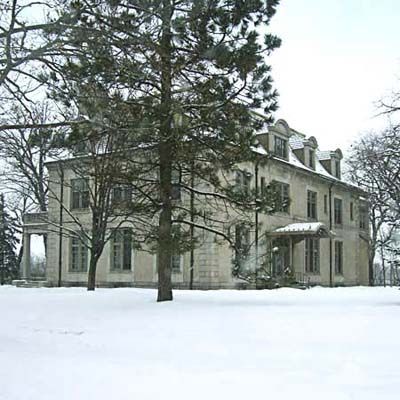
Once named the “Granite City” thanks to its many quarries and stone-finishing businesses, St. Cloud is now known for its strong drive for preservation of historic homes and buildings. Many are flocking to the city to take advantage of its walkability and the perks of being near the culture of St. Cloud State University.
The Houses
Many of the houses were built during the Victorian era and include Queen Annes as well as a selection of Richardsonian Romanesques. Houses can be had starting at $100,000 and top out at about $400,000.
Why Buy Now?
After decades as an industrial city, St. Cloud is refocusing its efforts on becoming a tourist destination billed as “Granite Country USA.” The central business district of the downtown area is on the National Register of Historic Places, and property owners are being encouraged to perform exterior improvements in a historically sensitive manner.
Among the best for: College Towns, Fixer-Uppers, Midwest, Victorians, Walkability
Old Lee’s Summit, Lee’s Summit, Missouri
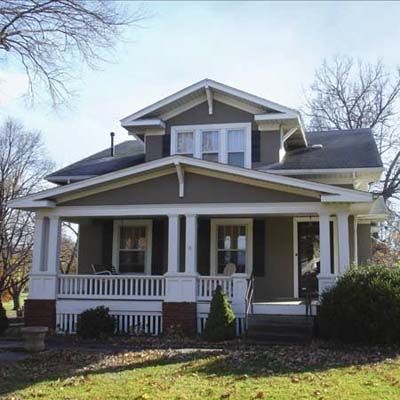
Less than 20 miles southeast of Kansas City, Missouri, and surrounded by three lakes, the once agricultural city of Lee’s Summit has turned into the quintessential suburb, with excellent schools and a family-friendly atmosphere. Parades, festivals, concerts, and other fun events are scheduled throughout the year. The town grew up around the railroad, which still runs through the recently revitalized downtown. Some of the finest homes were built by the city’s first railroad barons and can be found in Old Lee’s Summit.
The Houses
Homes range from $100,000 to $300,000. There’s something for everyone here, from 1880s farmhouses to early-1900s Queen Annes, Colonial Revivals, and Craftsman bungalows.
Why Buy Now?
Old Lee’s Summit is just outside downtown, where you can find a bustling commercial scene—BBQ joints, ice cream shops, hardware and interior design stores, and more. The public schools are known as some of the best in the state, so if you want to get your family into an affordable home in a neighborhood worthy of a long-term investment, this is the place for you.
Among the best for: Cottages and Bungalows, Easy Commute, Families, Fixer-Uppers, Midwest, Small Town, Victorians, Walkability, Waterfront
Uptown, Butte, Montana
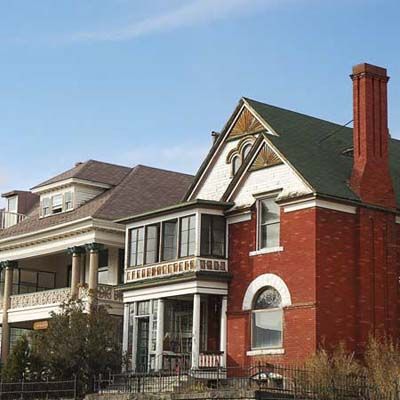
Back in its copper mining heyday, Butte’s population peaked at 100,000, with pioneers migrating by the droves, hoping to lay claim to the region’s abundant material riches. Rimmed by the Rocky Mountains and nestled on the Continental Divide—within a 2-hour’s drive of Yellowstone National Park—the Butte of today is smaller and geared more toward a festival-and-tourism-based economy. But it retains the ethnic diversity of its original settlers and their architectural tastes; you’ll find hundreds of historic homes in a range of sizes and styles.
The Houses
The local architecture catalogs two building booms that took place in the 1880s and 1910s to accommodate the influx of miners. Tiny cottages and simple shotguns mingle with grand Greek Revival, Queen Anne, and Italianate mansions. The average price of homes here is $116,000, though fixer-uppers can be found for substantially less.
Why Buy Now?
If you’re looking to buy and renovate an old home, you won’t be tackling it alone. The Butte Citizens for Preservation and Renovation, a nonprofit, grass-roots organization, runs workshops on brick, window, and interior-wood repair and holds regular salvage sales, where historic building materials can be purchased at reasonable prices.
Among the best for: Bargains, Cottages and Bungalows, Fixer-Uppers, History Happened Here, Midwest, Victorians
Central Hastings Historic District, Hastings, Nebraska
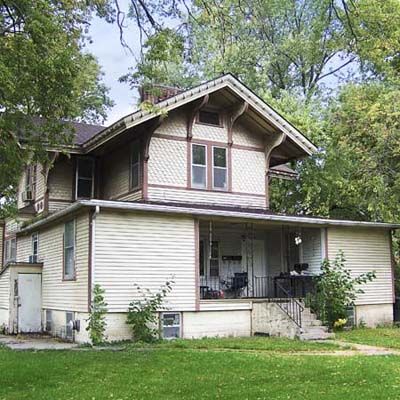
The first wave of residential construction in Hastings took place in 1878, when a handful of houses were built on lots carved out of a 160-acre homestead owned by Civil War veteran and local postmaster Samuel Alexander. Today the most charming fixer-uppers are still found here, just north of downtown. They’re well within walking distance of dining and shopping on Burlington Avenue, where an eclectic blend of mom-and-pop shops outnumbers big-box businesses.
The Houses
Ornate Victorian-era houses—Italianates, Sticks, and Queen Annes—paid for with railroad wealth stand beside more modest Prairie-style and Craftsman houses built rebellion of earlier excess. When the now-defunct Naval Ammunition Depot was constructed in 1942, a number of English-style cottages were squeezed into whatever space could be found to accommodate the growing workforce. Fixer-upper foursquares sell for $110,000, while a fully restored Queen Anne costs around $300,000.
Why Buy Now?
Under Nebraska’s Valuation Incentive Program, owners of qualifying historic homes who perform substantial renovations (25 percent of last assessed value) are eligible to have their property taxes frozen for eight years at the pre-restoration value. In addition, their property taxes will only rise 25 percent each year for the next four years until they reach the post-restoration value. Take advantage of this perk to convert large Victorian-era and Craftsman houses—divided into apartments during the housing shortage of the 1940s—back to single-family homes.
Among the best for: City Life, Cottages and Bungalows, First-Time Buyers, Fixer-Uppers, Midwest, Victorians, Walkability
Grand Forks, North Dakota
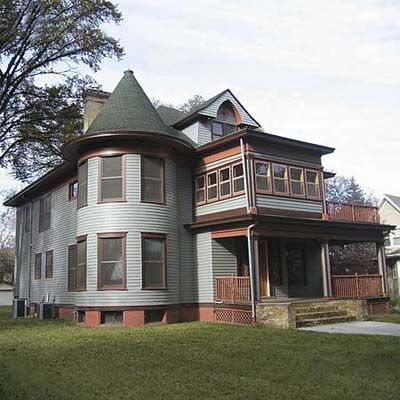
Looking to settle down and raise a family? Grand Forks consistently ranks as one of safest cities in the country to do so. It also has excellent public schools, and it’s home to the University of North Dakota, which provides plenty of intellectual stimulation—and collegiate sports. In short, Grand Forks offers the best of both worlds: a small, tight-knit community set against a stimulating cosmopolitan backdrop.
The Houses
The oldest, most stately historic homes are found in Old Grand Forks along the tree-lined Reeves Drive. A 1901 turreted Queen Anne was listed this past November for just over $500,000. Elsewhere you can find smaller early-20th-century homes starting in the low $100,000s.
Why Buy Now?
Despite the economic downturn, Grand Forks’ housing market has remained mostly stable. The median home price has declined only about $1,000 since October 2008, but local real estate agents insist this city is still a buyer’s market.
Among the best for: College Towns, Families, Midwest, Victorians
Wellington, Ohio
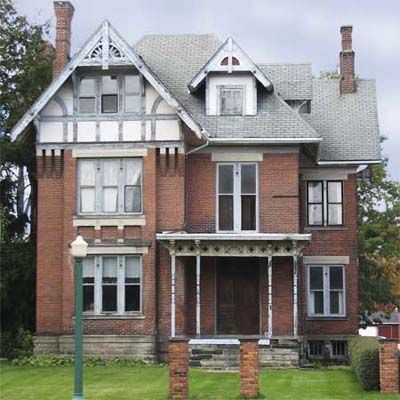
Wellington is a quaint and quiet northern Ohio town of about 4,700 people. For much of its history it was known for one thing: cheese. In 1880 there were more than 40 cheese factories in the area, and that’s precisely when this town’s population more than doubled. The town pays homage to its “cheesy” history each summer during the beloved Cheese Heritage Festival. Today, Wellington is known as a perfect get-away-from-it-all small town where people enjoy a peaceful rural life with many festivals and other activities, including the annual Lorain County Fair, one of the largest in the state.
The Houses
Wellington’s architecture is so diverse that many colleges conduct field trips here for their architecture majors. Most homes reflect the Victorian era: Gothic Revival, Italianate, Second Empire, Queen Anne, Folk Victorian, Shingle Style, and Colonial Revival. For $150,000 to $200,000, you can buy just about any available house in Wellington.
Why Buy Now?
The town offers small-town living with zero pretentiousness at bargain-basement prices. Wellington is just 50 miles from Cleveland and 15 minutes from Oberlin, Ohio, home to Oberlin College and its world famous Conservatory of Music. A farmer’s market is starting up this summer, so foodies will have plenty of locally sourced ingredients to choose from.
Among the best for: Bargains, College Towns, Gardening, Midwest, Small Town, Victorians
Pierre, South Dakota
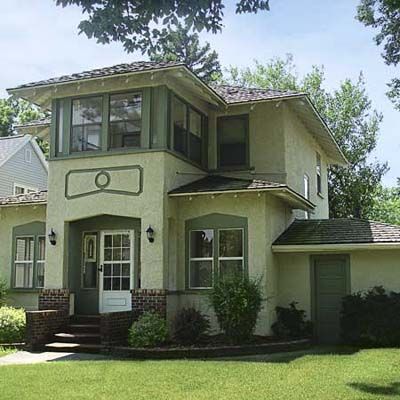
Tree-lined streets, sprawling yards, and quaint stone retaining walls are just a few of the hallmarks of Pierre Hill, a historic residential neighborhood overlooking the Missouri River just north of downtown. The area’s early affluent settlers, disgruntled with saloon culture and the fear of flooding, decided to separate themselves from the plateau-situated city and head to the hillside to construct their dream homes. The result: a collection of vintage houses with vernacular touches, such as the prevalence of enclosed porches and foyers, no matter the architectural style, to keep South Dakota’s winter chill at bay.
The Houses
Pierre wasn’t settled until the 1880s, so most of the homes here date to the late 19th and early 20th centuries. There are tons of foursquares, Prairie-style houses, and Craftsman bungalows, with some high-style Queen Annes mixed in. Prices start around $130,000.
Why Buy Now?
As the state’s capital, Pierre’s the place to snag a South Dakota government job. There’s a push, too, to draw more industry and commerce; a software company just relocated here. If you love the water, there’ll always be something to do; boating is big during the summer, while ice fishing and hunting keep outdoorsy types busy all winter long.
Among the best for: City Life, Cottages and Bungalows, Midwest, Waterfront
Beloit, Wisconsin
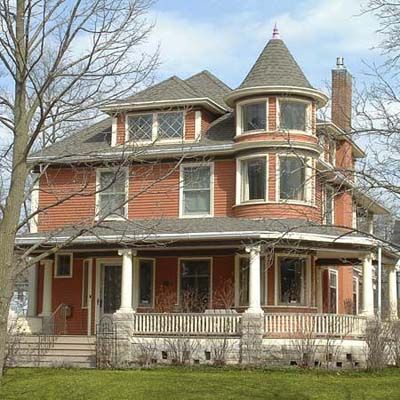
Despite its proximity to Chicago and Milwaukee and its three resident multi-billion-dollar international companies, Beloit, Wisconsin, has managed to maintain its small-town feel and affordable historic housing. Its old-house neighborhoods are just a short walk away from a revitalized downtown district, riverfront, and the cultural and intellectual offerings of Beloit College, known for the ancient Indian mounds on campus.
The Houses
Foursquares run as low as $80,000, while larger, move-in-ready Georgian Revival and Queen Anne homes can be purchased for under $200,000.
Why Buy Now?
Though homes within one of Beloit’s historic districts automatically qualify for the state’s historic-home tax credit, houses outside the zoned areas may apply for individual listing to receive the 25 percent credit as well. The Beloit Neighborhood Association maintains a list of historic homes on the market, which will help with your search for the perfect home. They’ve also got a list of recommended local trade and service professionals to help with renovations.
Among the best for: Bargains, College Towns, Fixer-Uppers, Midwest, Small Town, Victorians, Walkability, Waterfront
